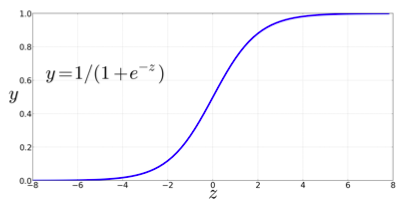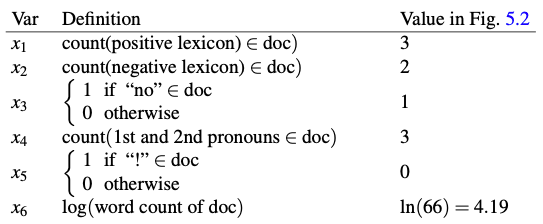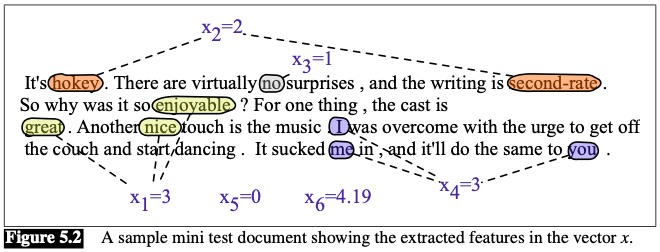Sigmoid
Sigmoid to Logistic Regression
Consider a single input observation
The classifier output can be
- : the observation is a member of the class
- : the observation is NOT a member of the class
We want to know the probability that this observation is a member of the class.
E.g.:
- The decision is “positive sentiment” versus “negative sentiment”
- the features represent counts of words in a document
- is the probability that the document has positive sentiment, while and is the probability that the document has negative sentiment.
Logistic regression solves this task by learning, from a training set, a vector of weights and a bias term.
Each weight is a real number, and is associated with one of the input features . The weight represents how important that input feature is to the classification decision, can be
- positive (meaning the feature is associated with the class)
- negative (meaning the feature is NOT associated with the class).
E.g.: we might expect in a sentiment task the word awesome to have a high positive weight, and abysmal to have a very negative weight.
Bias term , also called the intercept, is another real number that’s added to the weighted inputs.
To make a decision on a test instance, the resulting single number expresses the weighted sum of the evidence for the class:
(Note that is NOT a legal probability, since )
To create a probability, we’ll pass through the sigmoid function (also called logistic function):

👍 Advantages of sigmoid
- It takes a real-valued number and maps it into the range [0,1] (which is just what we want for a probability)
- It is nearly linear around 0 but has a sharp slope toward the ends, it tends to squash outlier values toward 0 or 1.
- Differentiable handy for learning
To make it a probability, we just need to make sure that the two cases, and , sum to 1:
Now we have an algorithm that given an instance computes the probability . For a test instance , we say yes if the probability is more than 0.5, and no otherwise. We call 0.5 the decision boundary:

Example: sentiment classification
Suppose we are doing binary sentiment classification on movie review text, and we would like to know whether to assign the sentiment class + or − to a review document .
We’ll represent each input observation by the 6 features of the input shown in the following table


Assume that for the moment that we’ve already learned a real-valued weight for each of these features, and that the 6 weights corresponding to the 6 features are , while .
- The weight , for example indicates how important a feature the number of positive lexicon words (great, nice, enjoyable, etc.) is to a positive sentiment decision, while tells us the importance of negative lexicon words. Note that is positive, while , meaning that negative words are negatively associated with a positive sentiment decision, and are about twice as important as positive words.
Given these 6 features and the input review , and can be computed:
This sentiment is positive ().